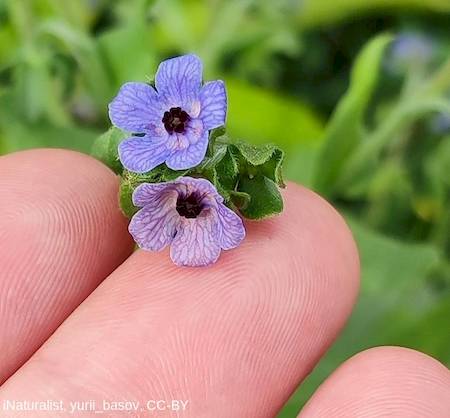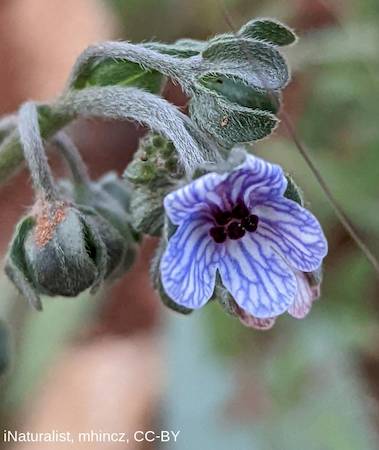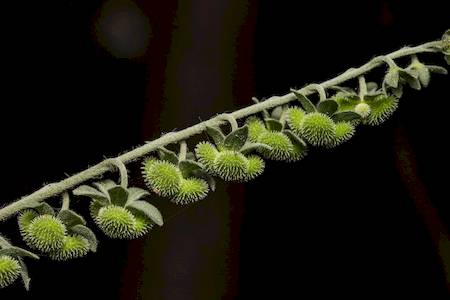Weedscan Weed Profiles
WeedScan is a free community weed identification, alert, recording and communication system that supports cooperative weeds action Australia-wide. The weed profiles are being improved, please send feedback to weeds@invasives.com.au
View the Project on GitHub Centre-for-Invasive-Species-Solutions/demo_json_api
Boraginaceae
Cynoglossum creticum
Common Names: Blue hound’s tongue
Plant Form: Biennial rosette herb. Size: Up to 60 cm tall. Stem: One or more upright flowering stems. Densely covered in fine hairs. Leaves: Long, narrow, dark green, up to 20 cm long, alternate along stem, decreasing in size further up. Heart-shaped base that is clasped around stem. Flowers: Tube shaped opening to pink to blue petals, up to 1 cm diameter. Fruit and Seeds: Each flower produces four nutlets covered with prickles, containing oval shaped 6-8 mm long seeds. Habitat: Grassland, open woodland, dunes, roadsides, pastures. Distinguishing Features: More erect stems than Forest hound’s-tongue (Austrocynoglossum latifolium). Larger flowers than Australian hound’s-tongue (Cynoglossum australe), Sweet hound’s-tongue (C. suaveolens) has whiter flowers. Impacts: Outcompetes native and crop species, can be toxic to livestock.



